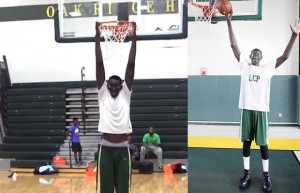Here we are, in the midst of so-called March Madness. For many avid sports fans, March Madness is both tremendous and frustrating. Like the Super Bowl, the NCAA basketball tournament provides an opportunity for those who know nothing about basketball to feel like they know something about basketball.
The game of basketball is one of the most cerebral games there is. Strategy can change in a split second. And when there are 63 games, over a three-week span, determining the number of potential strategic outcomes requires analytical calculus. That entropy, coupled with the emotional fanaticism of the typical basketball fan, is why we use the term “madness”.
 It isn’t just about the fans. Basketball players, coaches and analysts also look forward to this time of year. March Madness provides the opportunity to study the game of basketball. Several years ago, this kind of basketball analysis took the basketball world by storm. Basketball analytics, so creatively called, uses predictive analytic data to develop strategic decision-making. Fans are unaware of it, players live with it and coaches absolutely love it.
It isn’t just about the fans. Basketball players, coaches and analysts also look forward to this time of year. March Madness provides the opportunity to study the game of basketball. Several years ago, this kind of basketball analysis took the basketball world by storm. Basketball analytics, so creatively called, uses predictive analytic data to develop strategic decision-making. Fans are unaware of it, players live with it and coaches absolutely love it.
The proliferation of the three-point shot is a consequence of this kind of analysis. Even though the greatest players in history dominated the game from inside the three-point arc, coaches continue to force their kids into the “lay-up, three-point” game. By statistically predicting that scoring is more efficient with lay-ups and set shot three-pointers, basketball analytics have single-handedly regaled the mid-range shot to the basketball archives.
It isn’t the data analyst’s fault. Data is neither good nor bad. But, those who analyze data can sometimes misinterpret results or ascribe inappropriate causes to unrelated outcomes. Because all championship teams have players who wear socks, some analysts make inappropriately construe that socks are essential for winning a championship. Or are they? Confusing right?! What’s more, even though analytics have been used to remove the two-point shot (sorry Michael and Kobe), other more convincing data has been inadvertently or conveniently ignored.
Any rational high-level high school or college basketball coach spends most of their time evaluating future prospects for skill, talent, athleticism and height. When they recruit, many of those coaches will emphatically tell you that height is one of the most important variables. In some studies, a college basketball recruit above 6’4” has a two or even three times higher chance of being recruited to a division 1 college basketball program.
After all, taller is better. Well, let’s apply the infamous basketball analytics. Let’s look at the top scorers, from the 2015-2016 NCAA regular season.
| NCAA Division I Basketball Scoring Leaders | ||
| Height | Points Per Game | |
| 5’11” | 27.1 | |
| 6’4” | 25.0 | |
| 6’2” | 24.7 | |
| 5’9” | 24.2 | |
| 5’11” | 23.6 | |
| 6’2” | 23.5 | |
| 6’0” | 23.5 | |
| 6’0” | 23.1 | |
 This doesn’t make much sense?! I knew a high-school coach that would bound around the gym asking each elementary school basketball player, “how tall are your parents?” Most basketball coaches are preoccupied with height. But if they used analytics, maybe they would consider something slightly different.
This doesn’t make much sense?! I knew a high-school coach that would bound around the gym asking each elementary school basketball player, “how tall are your parents?” Most basketball coaches are preoccupied with height. But if they used analytics, maybe they would consider something slightly different.
This data is not only confusing; it is downright confounding. Only two players on this list are above 6’4”. So it would appear, based on basketball analytics, most coaches have it all backwards. They should really be asking, “how short are your parents?”
Well maybe not. There is more to basketball than scoring. And it stands to reason that taller players can provide advantages beyond scoring. Defense and rebounding are probably much easier with the addition of a few inches. And this data may not consider all of the variables. What it does seems to show – is that if a coach is looking for a scorer, they should probably select someone under the magical 6’4”.
Basketball coaches aren’t the only ones to make this kind of folly. Our society is far from a meritocracy. We predict success based on assumptions, without fully looking at all the data. We use income, looks, size, intelligence, family history, neighborhoods and schooling, in the same way basketball coaches use height. And surprisingly, we are astounded when a 12 seed beats a 5 seed. If we spent a little more time paying attention, the 12th seed wouldn’t be a 12 seed at all. Maybe if we look at all the data, we would pick winners a little differently.
By the way…. Steph Curry, the reigning NBA MVP is 6’3”. Good ol’ analytics.
Slight different,
doc mu
